This post is also available in: French
Planning to spend 4 days in Hanoi, Vietnam, and looking to see as much as possible? There are so many things to see in Hanoi and the surrounding area. This Hanoi itinerary will help you make the most out of your stay.
If you’re planning on going to Vietnam, the vibrant city of Hanoi will most certainly be on your list and may well be the jumping-off point for your Asian adventure. In which case, you’ll want to plan an amazing Hanoi itinerary to start your trip off in style. Having recently returned from Vietnam, I have put together a four-day Hanoi itinerary that I think ticks all the boxes for those wishing to soak up the city’s history, culture, charm, and character.
From the world-famous Ho Chi Minh Mausoleum and the Vietnam War Museum to the stunning collection of temples, lakes, markets, and more, this Hanoi itinerary really does have it all! Plus, giving yourself four days also allows you to take a day trip to Halong Bay which is one of the real highlights of the whole of Vietnam!
Table of Contents
The Best Time To Visit Hanoi
Hanoi’s climate has a bit of a mix between standard Northern Hemisphere seasons (with varying temperatures throughout the year) and trop
ical downpours that are more in line with its southeast Asian location. As such, you’ll need to decide what your priorities are in terms of weather when deciding when is the best time for you to visit Hanoi.
February to April tends to be Hanoi’s spring months with mild temperatures (15-20) and regular drizzle making it an ideal time for vegetation to bloom. From then on, the summer months of May to August start to heat up with temperatures heading into the 30s and sometimes even 40s throughout the months of July and August! These months are distinguished by their heat and high humidity as well as heavy afternoon rainfall which can sometimes cause serious flooding.
Once you get into September temperatures start to dip again, with pleasant 25-degree days and a changing autumnal landscape that makes a stunning backdrop on your trip. And lastly, winter in Hanoi lasts throughout December and January. These months are usually cool yet with high humidity which means they’re not the best time to travel unless you want to explore the city while avoiding the heat.
Disclaimer: This post contains affiliate links. This means that should you click on certain links, and then subsequently purchase a product, I will receive a small commission.
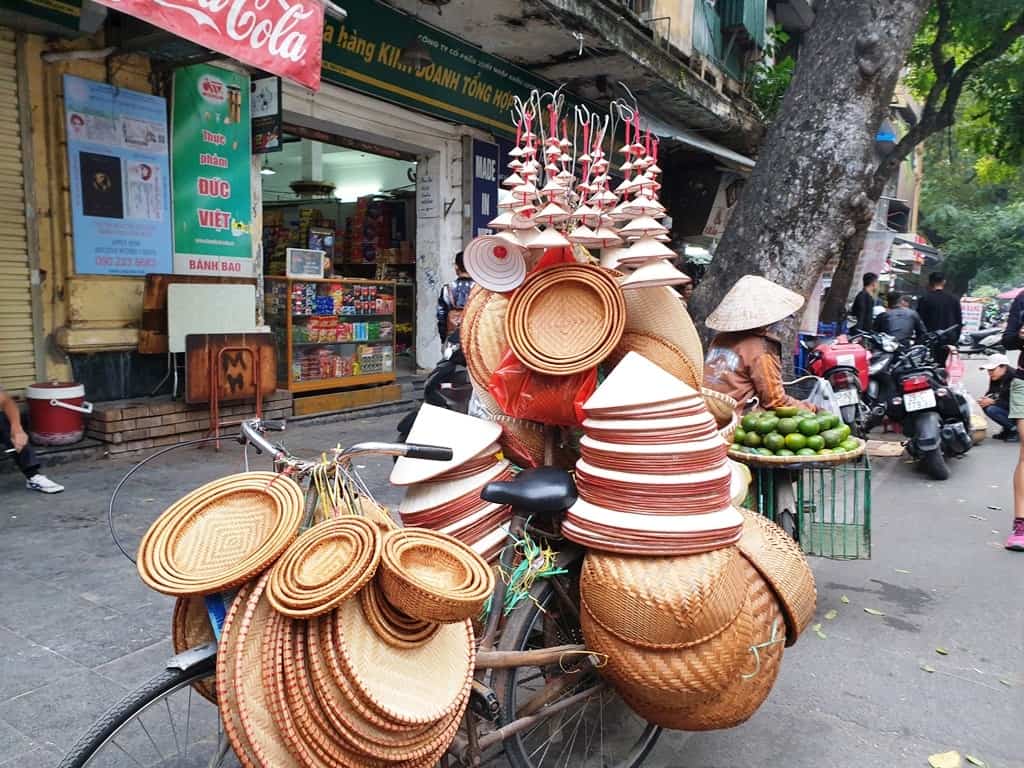
How To Get To And From The Airport In Hanoi
There are various ways that you can get to Hanoi city center from Noi Bai HAN Airport (and vice versa) with the shuttle being one of the cheapest and easiest methods for those staying in the Old Quarter. The airport shuttle service costs around 40,000VND (under $2/1.50) and should take around 45 minutes to one hour depending on the time of day you travel and whether the bus leaves on time!
From the airport, the shuttles leave from just outside the terminal and from the city center they leave from the Vietnam Airlines Office on Quang Trung near the Hoan Kiem Lake. These buses usually leave every hour but it may be a case of waiting until the bus is full before the driver departs. Depending on where you are staying in the city, you may be able to walk to your hotel or hop in a taxi for the last leg.
Alternatively, you could take a taxi all the way from the airport to the city. This could be a good choice if you are traveling as a group or know that you are staying somewhere outside of the center. Taxis generally cost around 300,000-350,000VND ($12-15/10-12) so still won’t break the bank. You’ll want to make sure you get an official green taxi from the airport taxi rank though to ensure that you don’t get ripped off by an unscrupulous taxi driver charging over the odds on his dodgy meter!
If you’d rather have a transfer organized in advance (a particularly good idea if you’re arriving late at night) then you can arrange a private airport transfer for around $15/12 so that you can have a professional driver waiting with a personalized sign to take you from door-to-door – click here for more information and to book your transfer.
How To Get Around Hanoi
Many of Hanoi’s main city sights are located in the Old and French Quarters which means that they are generally accessible on foot from your hotel if you are staying somewhere central. As there are simply so many things to see and do you’ll never have to walk more than half an hour before stumbling upon yet another sight!
If you do wish to travel long distances in and around Hanoi, you can take a motor-taxi (known as xe om), a cab (always try to flag down a green one) or hop on the electric bus which covers the Old Quarter and the area around Hoan Kiem Lake. For shorter hops when you don’t fancy walking in the Hanoi heat, take a cyclo (similar to a rickshaw), just make sure you agree on a fixed price first.
With most transport options around the city, it’s a good idea to have your destination written down in Vietnamese to avoid miscommunication!
4 Days in Hanoi, a Comprehensive Hanoi Itinerary
4 days in Hanoi: Day One
Your first day in Hanoi Vietnam will be spent in and around the Old Quarter visiting the lakes, temples and significant sites that give you an insight into the city’s history and culture. There will be a lot of walking today so make sure you’re wearing comfortable shoes and have a backpack complete with your camera, water, and daily essentials!
Tran Quoc Pagoda and West Lake
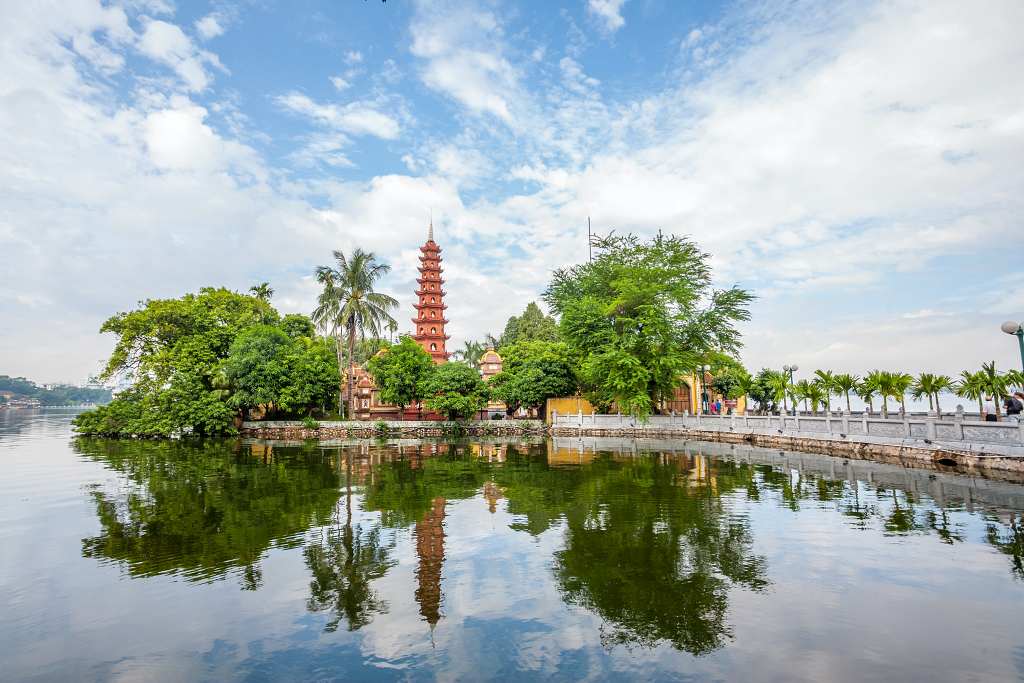
The Tran Quoc Pagoda located on West Lake in the heart of Hanoi is one of the most iconic city sights, not least because it is the oldest pagoda in the city. The Tran Quoc Pagoda – meaning protecting the peaceful country – is around 1500 years old and is a sacred space that is visited by both locals and tourists alike who come to admire the beautiful architecture as well as the peace that it represents within this chaotic city. The site features a distinct red stupa, a Bodhi tree donated by the Indian president as well as smaller temple buildings and a museum which houses important antiques and statues.
Presidential Palace Historical Site
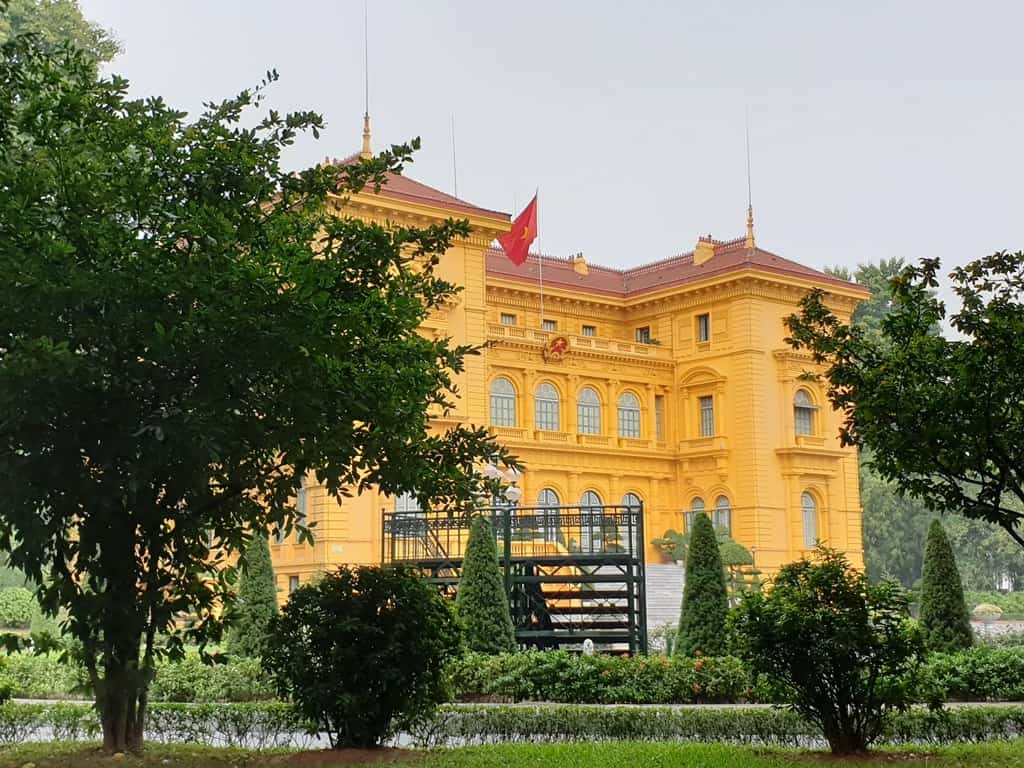
The Presidential Palace Historical Site (Khu di tích Phủ Chủ tịch) is a yellow, French colonial-style building that was the home of President Ho Chi Minh during the 1950s and 60s. Since 1977 it has been open to the public as a cultural site and visitors can explore the rooms where many political gatherings took place.
It is important to note that the Presidential Palace Historical Site is only open in the morning (7.30 am-10.30 am weekdays/7.30am-11 am weekends and holidays) so if you want to go inside the building, you’ll want to ensure that it is early on your itinerary.
Ho Chi Minh Mausoleum
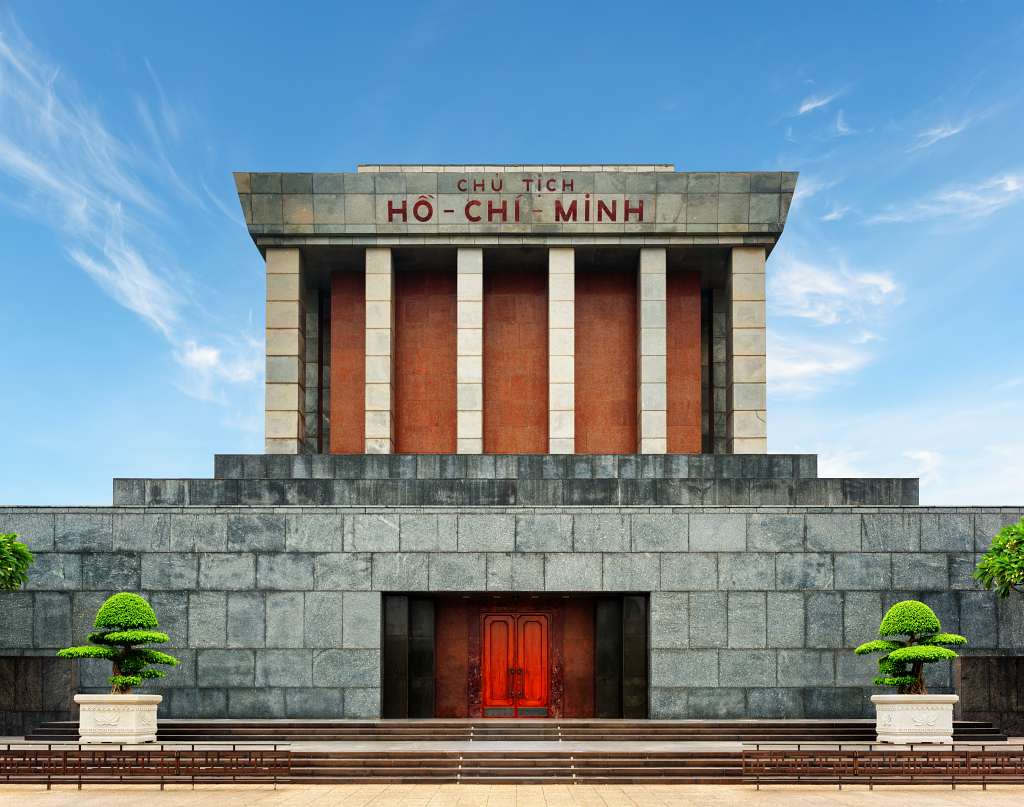
Next up is the Ho Chi Minh Mausoleum, another site that is only open in the morning. The Ho Chi Minh Mausoleum is situated in the center of Ba Dinh Square and is arguably the most visited attraction in the city.
The large structure is both imposing and iconic and thousands of visitors line up around the square to go inside and glimpse the body of the Vietnamese leader which is preserved here in a glass case. Admission to the Ho Chi Minh Mausoleum is free but it is worth noting that visitors are required to dress appropriately and are required to check-in their belongings before entering the site.
One Pillar Pagoda
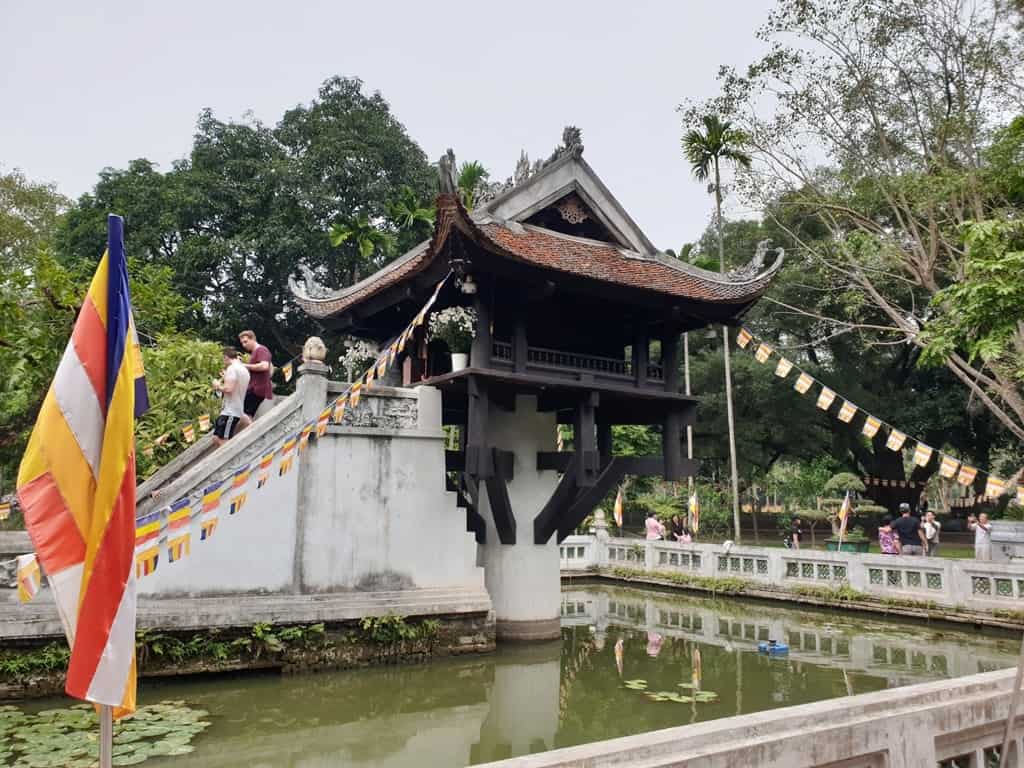
The quaint One Pillar Pagoda is a lovely site to visit in Hanoi with the structure thought to represent a pristine lotus flower rising up out of the water below. Built between the years of 1028 and 1054, the One Pillar Pagoda is both a tourist attraction and a holy shrine dedicated to the Vietnamese Buddhist deity Quan Am. As the pagoda is located in the park behind the Ba Dinh square, it is a tranquil place to relax and cool off after your visit to the mausoleum this morning.
Thăng Long Imperial Citadel
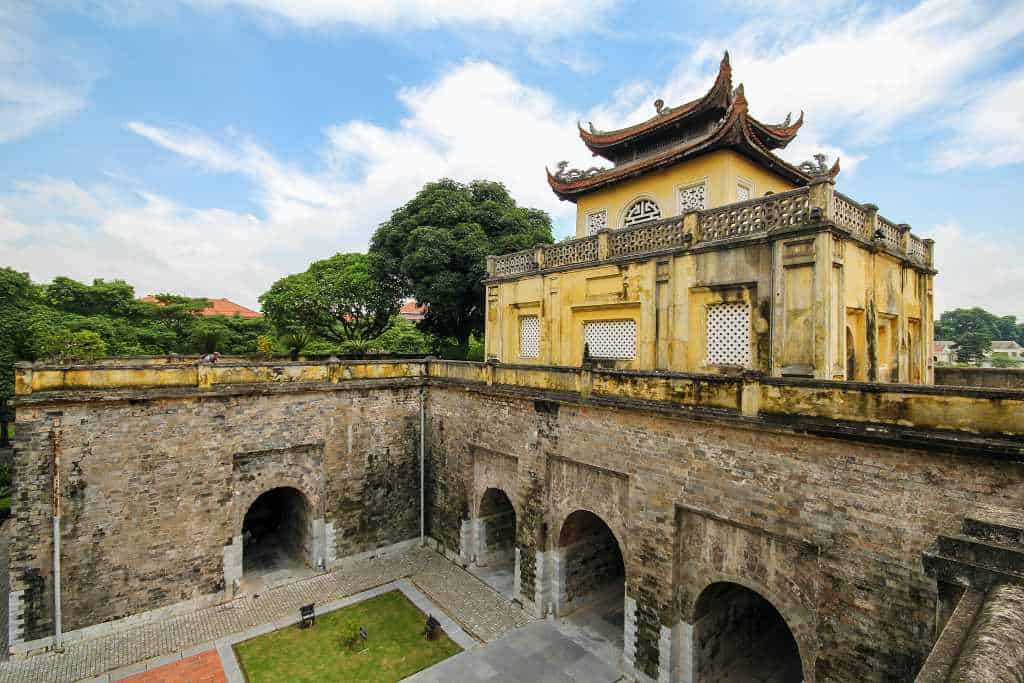
Another highlight of your trip to Hanoi will be the Thăng Long Imperial Citadel, a UNESCO World Heritage Site with ancient buildings and ruins and historic artifacts that give visitors an insight into the trading history and lives of Vietnamese people over the past few centuries. This was the cultural and political heart of the country for around 13 centuries and as such, the historic fortress is one of the most notable and important sites.
Hoa Lo Prison Memorial
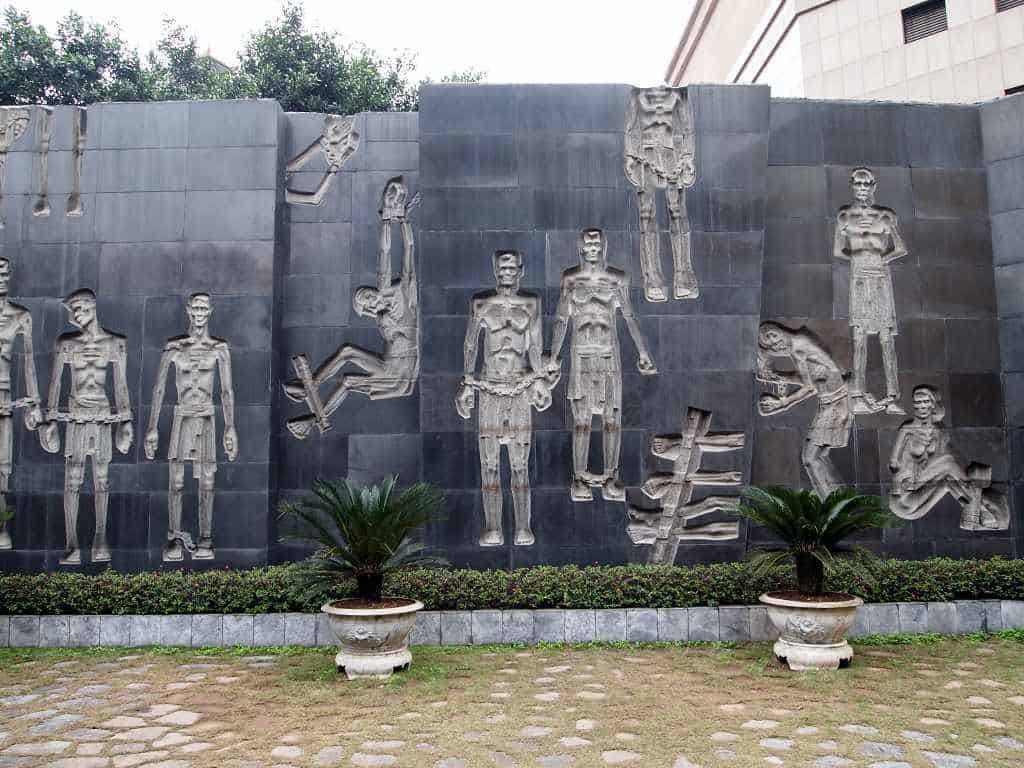
Hanoi’s Hỏa Lò Prison Memorial is a symbol of the Vietnamese struggle against French colonists in which harsh, inhumane punishments were carried out and hundreds of sacrifices took place in the hope of national independence. Today, the prison serves as a memorial and educational reminder of the atrocities and the tenacity of the Vietnamese people during this period.
Hoàn Kiếm Lake – Temple of the Jade Mountain – The Huc Bridge
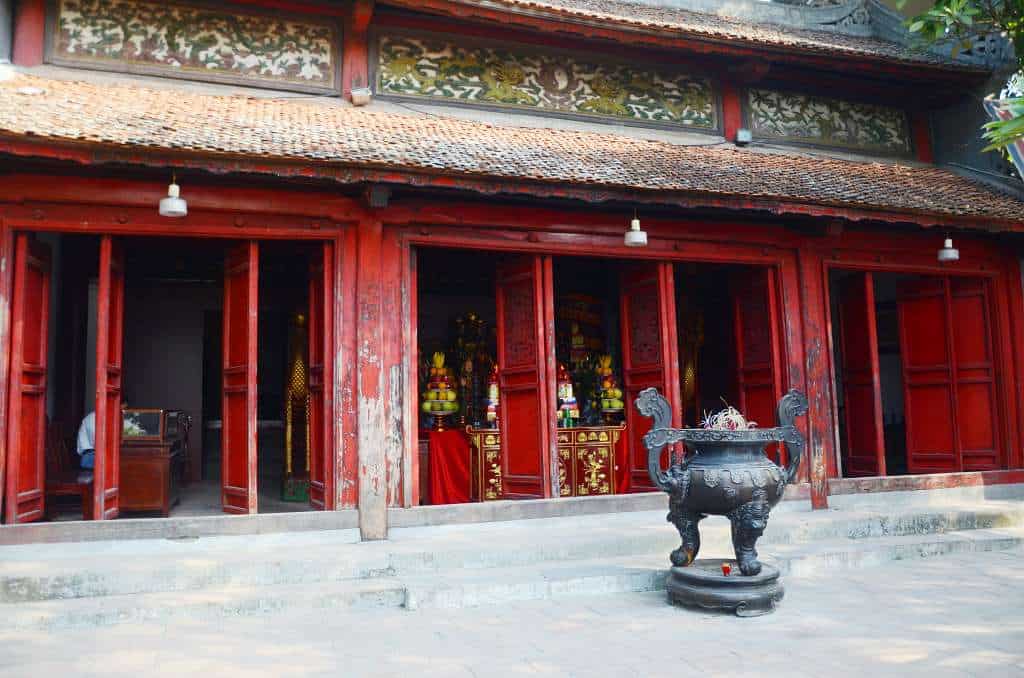
Another of Hanoi’s famous lakes is Hoan Kiem Lake, a peaceful retreat in the city that is home to Ngoc Son Temple (Temple of the Jade Mountain) accessed by crossing the picturesque Huc Bridge (Rising Sun Bridge). This iconic area is not only known for its beauty but also its legendary past that is thought to have seen an emperor defeat the Chinese Ming Dynasty with a magical sword, which, in turn, allowed the return of the Golden Turtle God to the lake.
Thang Long Water Puppet Theatre
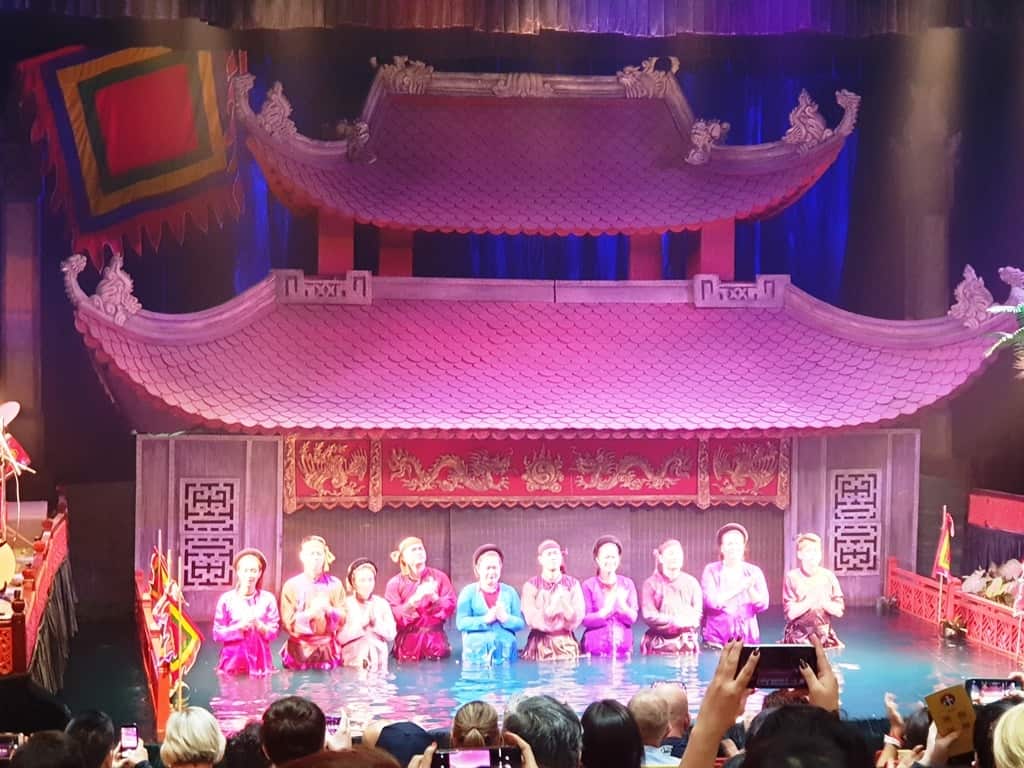
The last stop on Day 1 of your Hanoi itinerary is the Thang Long Water Puppet Theatre where you can spend an evening admiring this traditional Vietnamese art. The art of water puppetry is thought to have started in rural Vietnam when locals decided to make entertainment out of their flooded rice paddy fields. Typical water puppet shows features stories of everyday life in Vietnam or portrays historical legends, with light, sound, and movement creating an intriguing show of puppets floating across the water.
Click here to book your skip the line tickets for the water puppet theatre.
4 Days in Hanoi, Day Two
Vietnam Museum Of Ethnology
A great way to start your second day in Hanoi is to visit the Vietnam Museum Of Ethnology, a site that provides information about the 54 different ethnic groups in Vietnam. This is a fascinating museum that helps to preserve cultural heritage and identity through the use of education and exhibitions. The museum allows you to explore the different architectural styles of the ethnic groups, get an insight into the various pastimes and admire the range of traditional clothing, jewelry and festival items that make each of these groups unique.
Vietnam War Museum
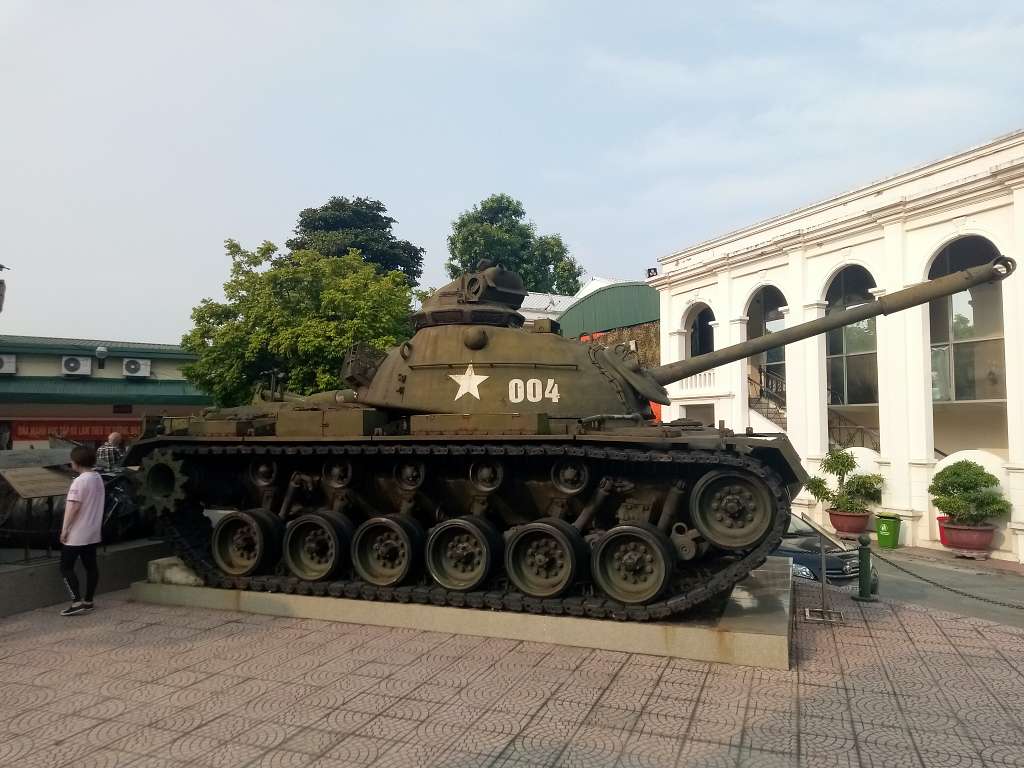
Next, you’ll move on to the Vietnam Military History Museum, a site that houses a vast collection of military items and weaponry that has been used throughout Vietnam’s tumultuous history. Not only does the museum feature authentic military relics but it also includes a number of first-hand accounts from former soldiers who tell their side of the story.
Temple Of Literature
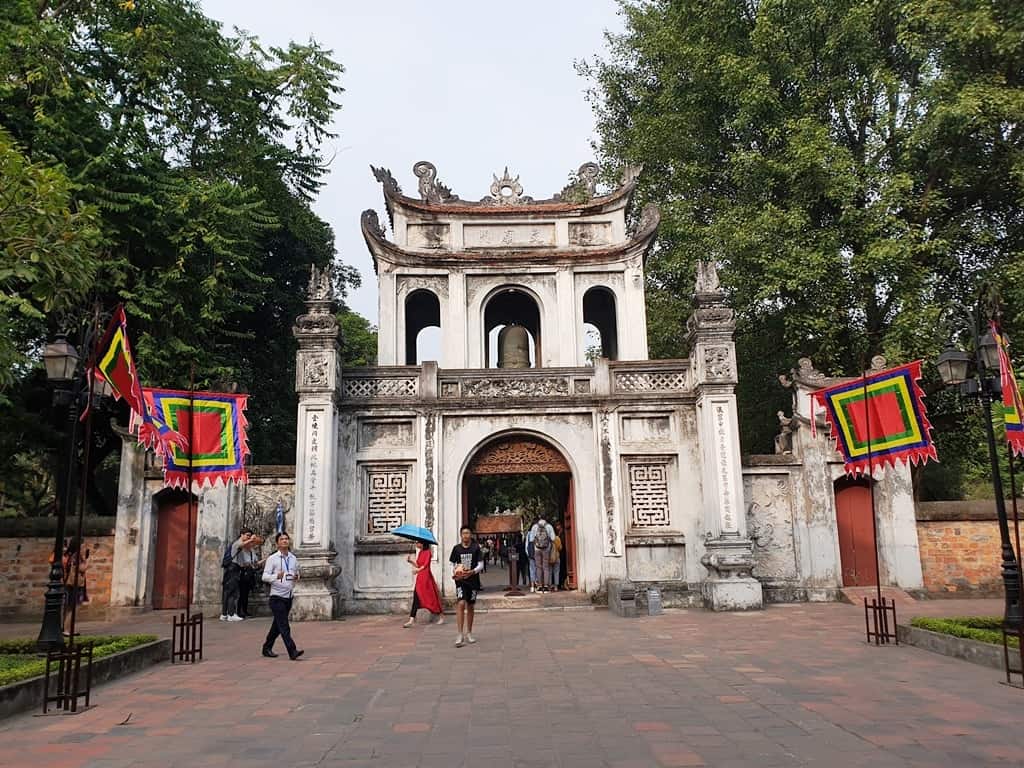
For those who prefer culture to history, the Temple Of Literature in Hanoi is a real favorite. This temple was originally constructed as a university in 1070 but is now a memorial to education and literature, with manicured gardens and courtyards focused on mental clarity and learning and with the names of successful graduates engraved on stone columns throughout the complex.
Train Street
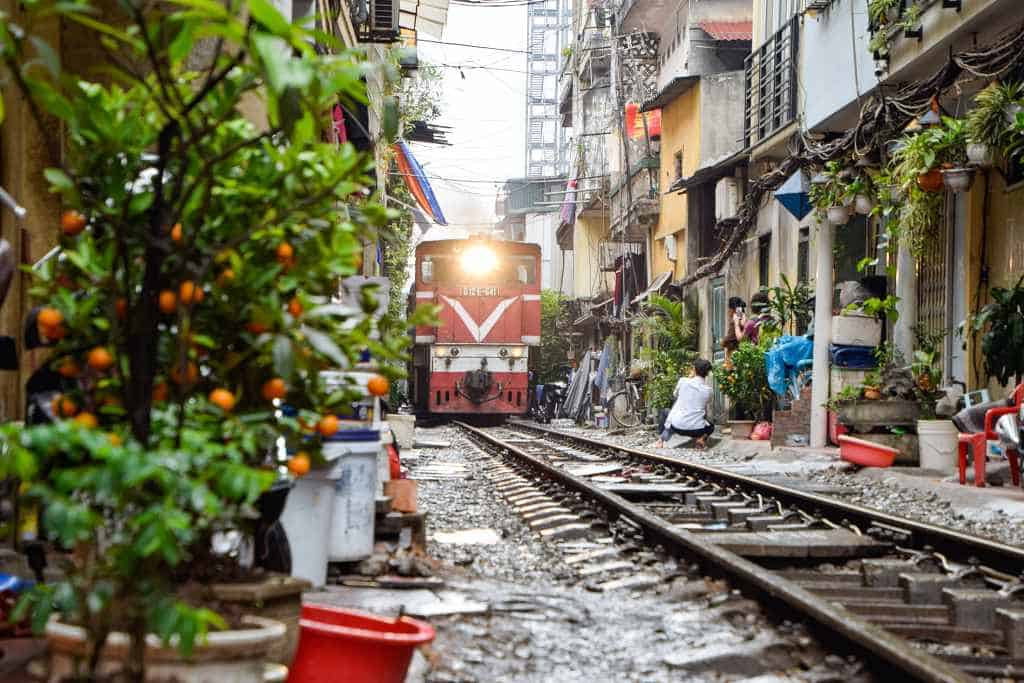
Hanoi Train Street is a much-loved Instagram spot thanks to the rare urban landscape that makes an amazing backdrop for photographs. The narrow, traditional Vietnamese street is iconic because it has a real, working railway running straight down the middle of it! For most of the day, life carries on as normal with children playing and local ladies cooking up street food, but every few hours everything gets cleared out of the way and a high-speed train whistles through the street on the way to Ho Chi Minh!
Check Out The Street Food
Asian street food is always a real highlight with tasty treats, meals, and snacks being cooked up on practically every street corner on the continent. Hanoi is no different and therefore checking out the street food is a must. With hearty bowls of steaming pho (noodle soup), crispy spring rolls, fresh summer rolls, and Vietnamese coffee there are loads of different treats to try. Plus, Vietnam has a historical French influence so you can try sumptuously filled baguettes (banh mi) and delectable desserts too! If you are worried about navigating Vietnamese street food stalls on your own, opt instead for a small-group walking tour of Hanoi’s street food so you can try the highlights without the hassle.
4 Days in Hanoi: Day Three
Day Trip To Tam Coc

After spending your first two days exploring the sights within the city, you might want to get away from the hustle and bustle to see something a little different. This is why I choose to put a day trip as the third day of this Hanoi itinerary.
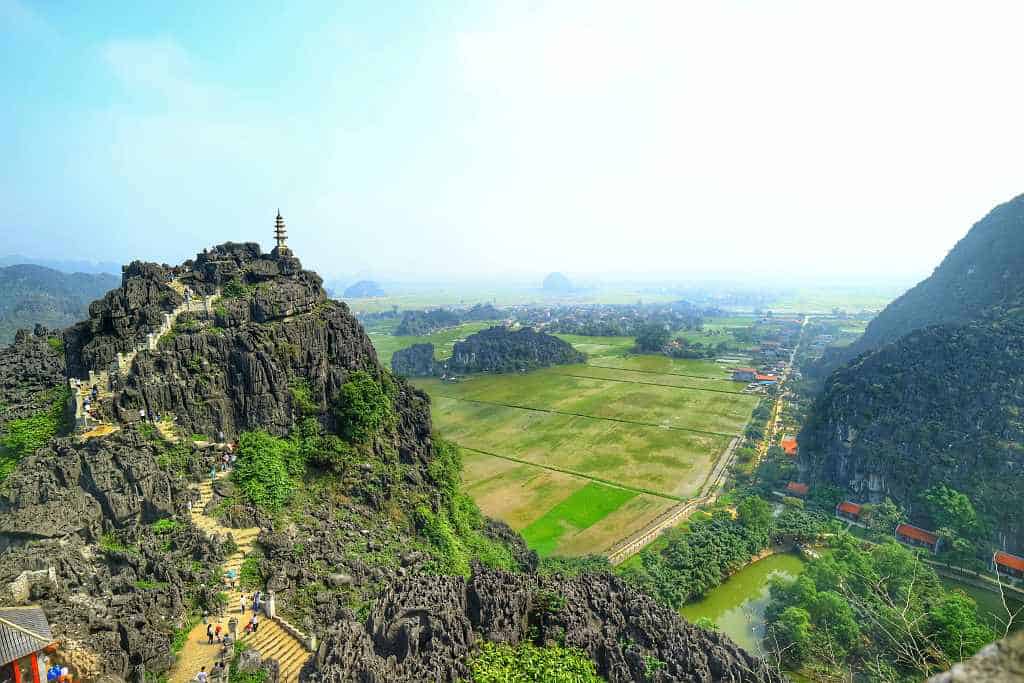
This day trip to Hoa Lu, Tam Coc, and Mua Cave allows you to enjoy a stunning boat trip along the Ngo Dong river in Vietnam’s rural countryside, witnessing traditional villages, the ancient capital of Hoa Lu and the spectacular Mua Cave and mountain. Guests can climb the 500 steps to the top of the cave where you will be greeted with panoramic views of the region!
Click here for more information and to book this tour.
4 Days in Hanoi: Day Four
Day trip to Halong Bay
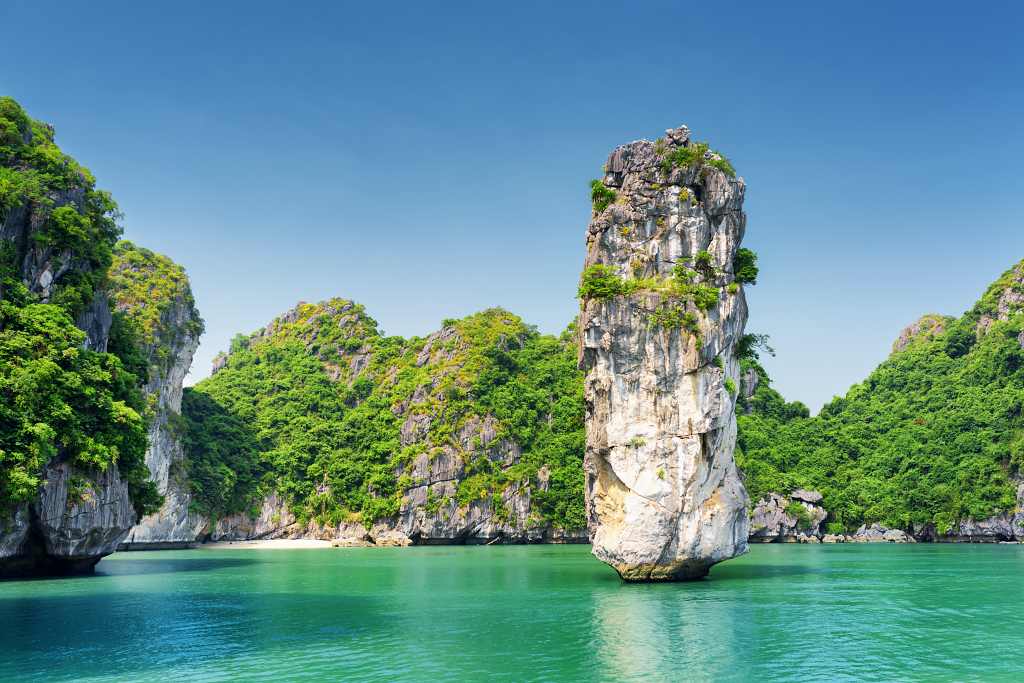
Last but by no means least on your four-day Hanoi itinerary is a day trip to Halong Bay. Halong Bay is one of the most impressive and iconic sites in the whole of Vietnam and is, therefore, a must when visiting Hanoi. The bay lies around 180km from the city and can be easily reached in just a few hours. As such, there’s really no excuse not to go. Your Halong Bay day trip will take you from the Old Quarter of Hanoi to the Tuan Chau Island pier where you will board your boat and enjoy a fresh seafood lunch while you sail amongst the islands.
Halong Bay comprises of a breath-taking selection of karst limestone peaks and islands along with white sand beaches, coves, and caves that invite you to take a closer look. If you wish, you’ll then have the chance to hop in a kayak to explore Thien Cung (Heavenly Palace Grotto) a huge chamber with mysterious stalactites and stalagmites at every turn. This is likely to be a real highlight of your trip and will be a day you’ll never forget!
Click here for more information and to book this cruise.
Where to stay in Hanoi
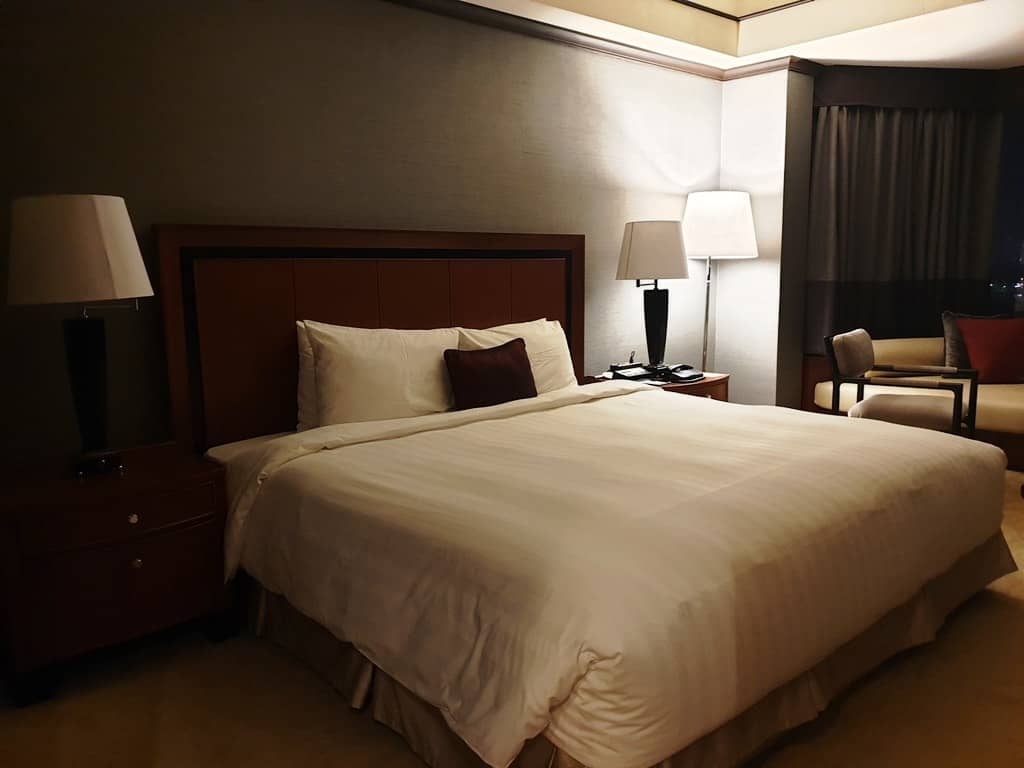
Hanoi has an incredible selection of hotels with everything from luxurious chains to local guest houses available to suit all travelers. During my trip, we stayed at the Hotel Du Parc, an exquisite hotel situated towards the south of the city. The property features large, modern rooms and excellent on-site facilities such as a restaurant, cafe, and lobby bar as well as a spa and fitness center. While I would recommend this for those seeking a stylish western hotel, the location did mean it was around a 30-minute walk to Ba Dinh Square or a taxi ride to other, further destinations.
Click here for more information and to check the latest prices.
Alternatively, if you want a hotel located in the heart of the French Quarter, you might want to opt for somewhere like the Apricot Hotel a gorgeous hotel situated on the edge of the Hoan Kiem Lake which features bright, comfortable rooms as well as a rooftop pool and spa facilities.
Click here for more information and to check the latest prices.
Hopefully, this four-day Hanoi itinerary has you inspired to start planning your trip to Vietnam so that you too can explore the country’s fascinating culture and landscapes. This itinerary gives you both a taster of the city center highlights, as well as a couple of local day trips to ensure your experience is varied, exciting, and interesting throughout.
Let me know in the comments if you’re planning on traveling to Hanoi and I can give you some more top tips!
Check out more posts on Vietnam:
1o day in Vietnam itinerary
Hoi An itinerary
1 day in Hue
Ho Chi Minh Itinerary

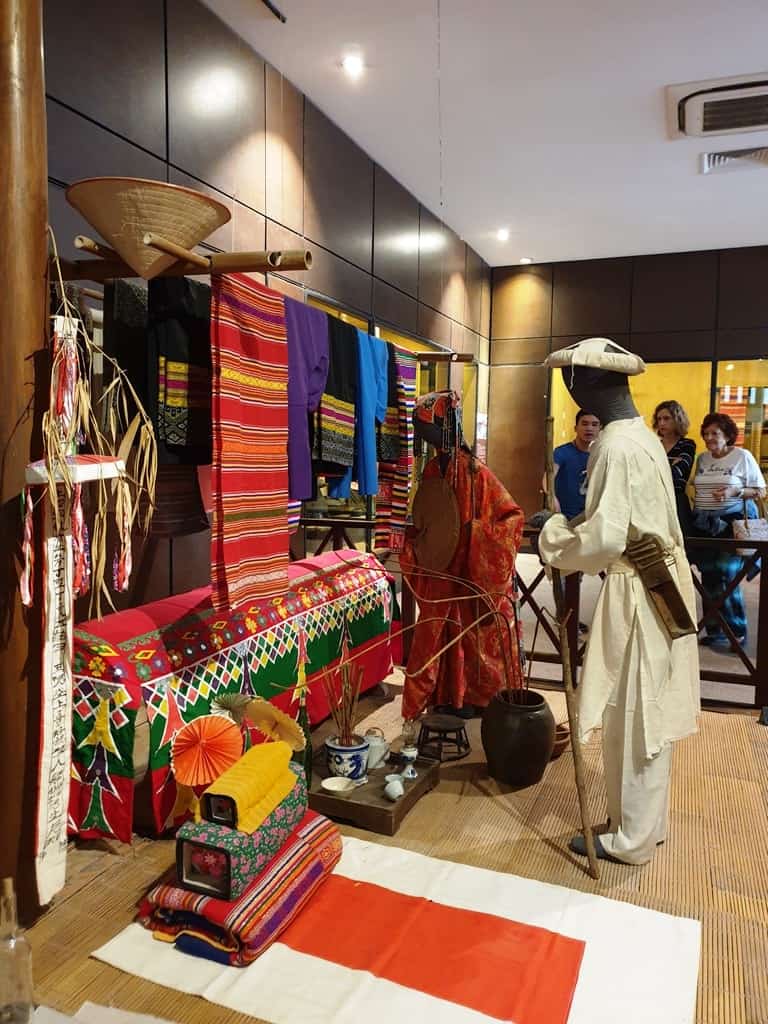
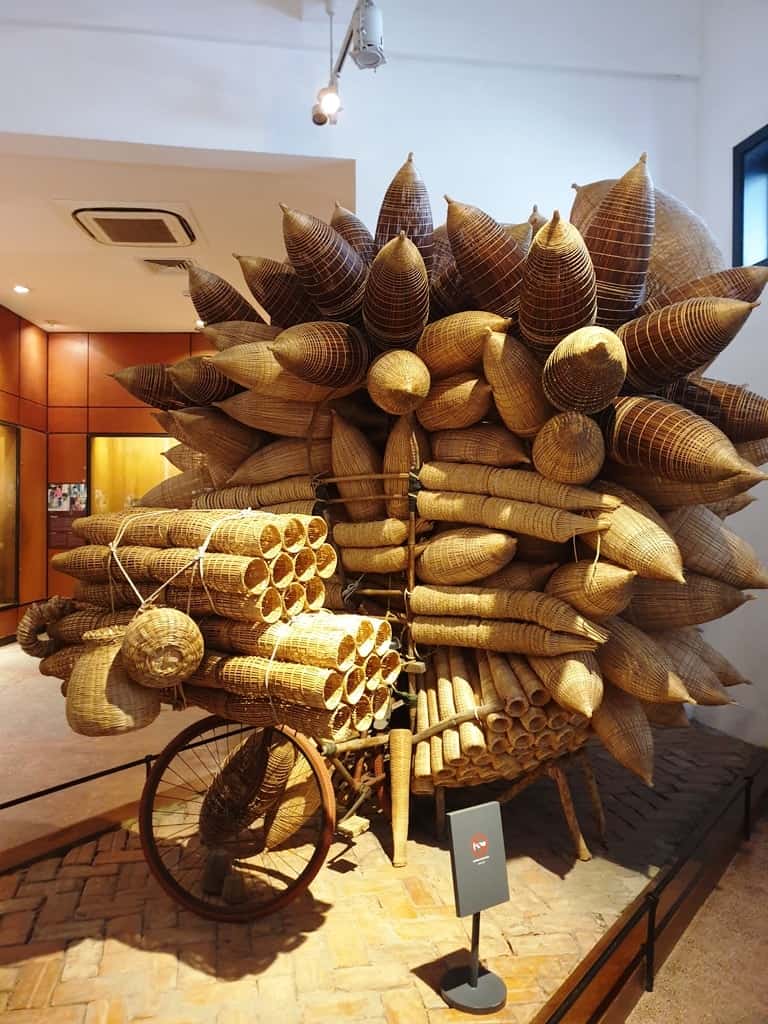
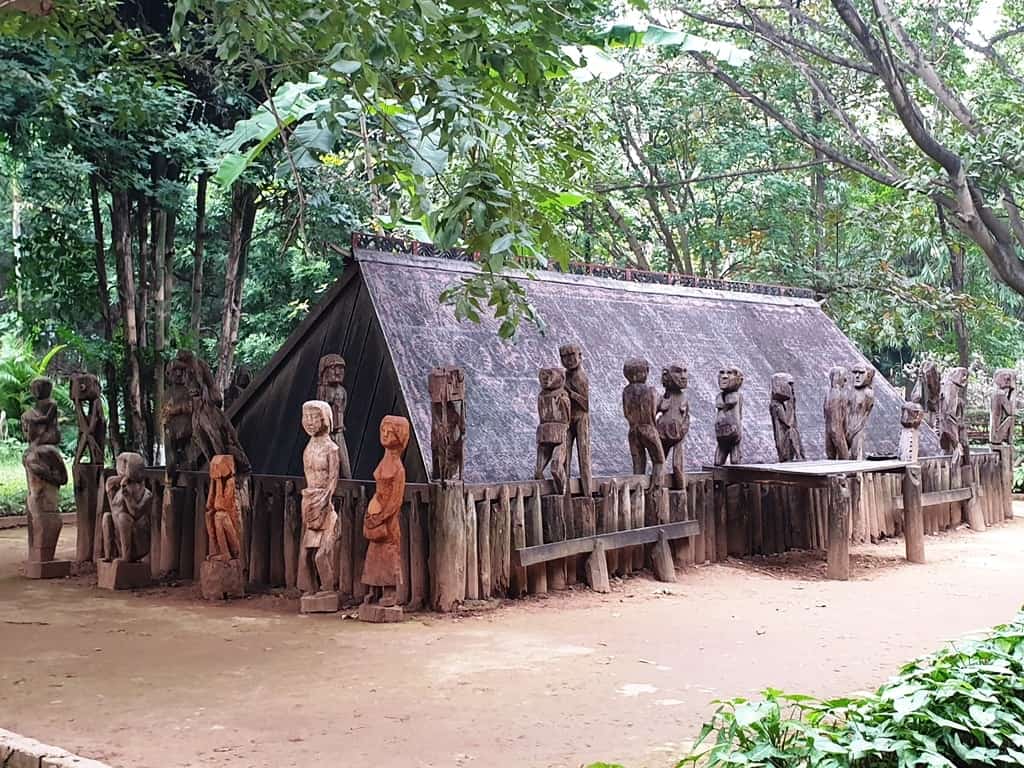
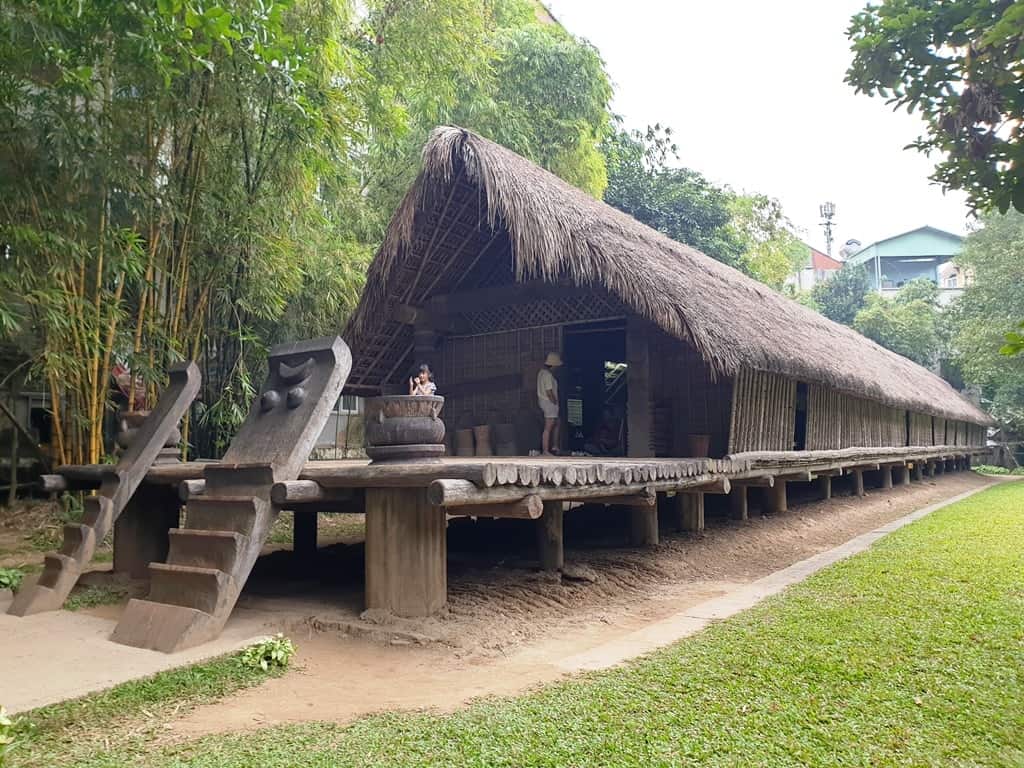
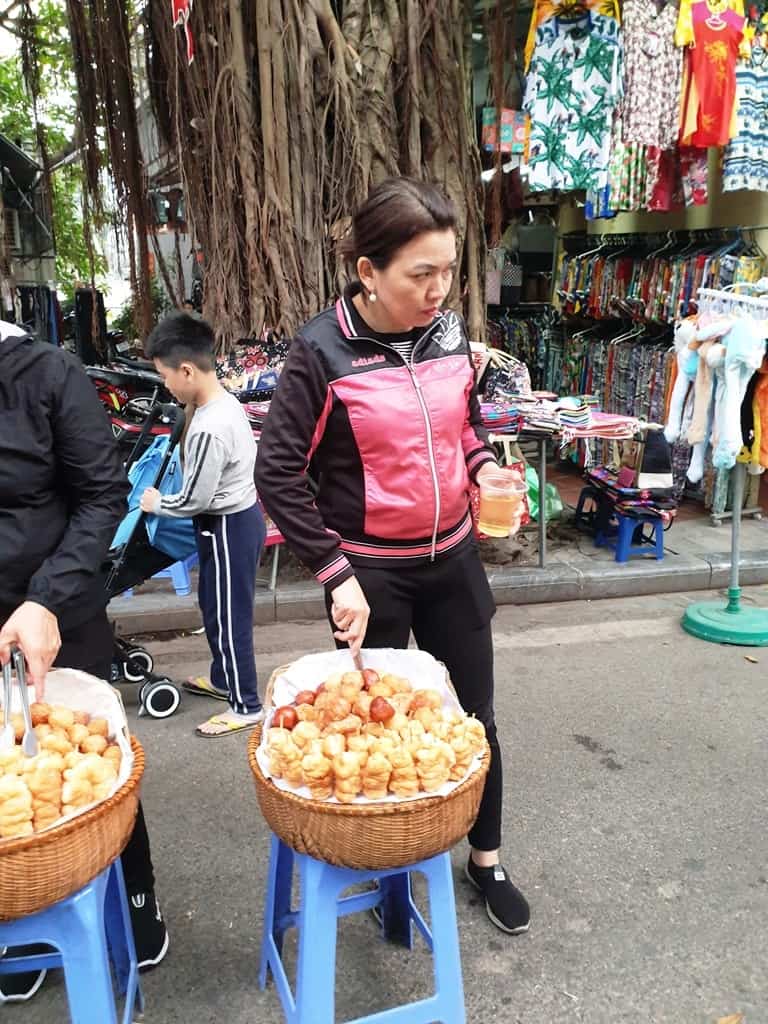
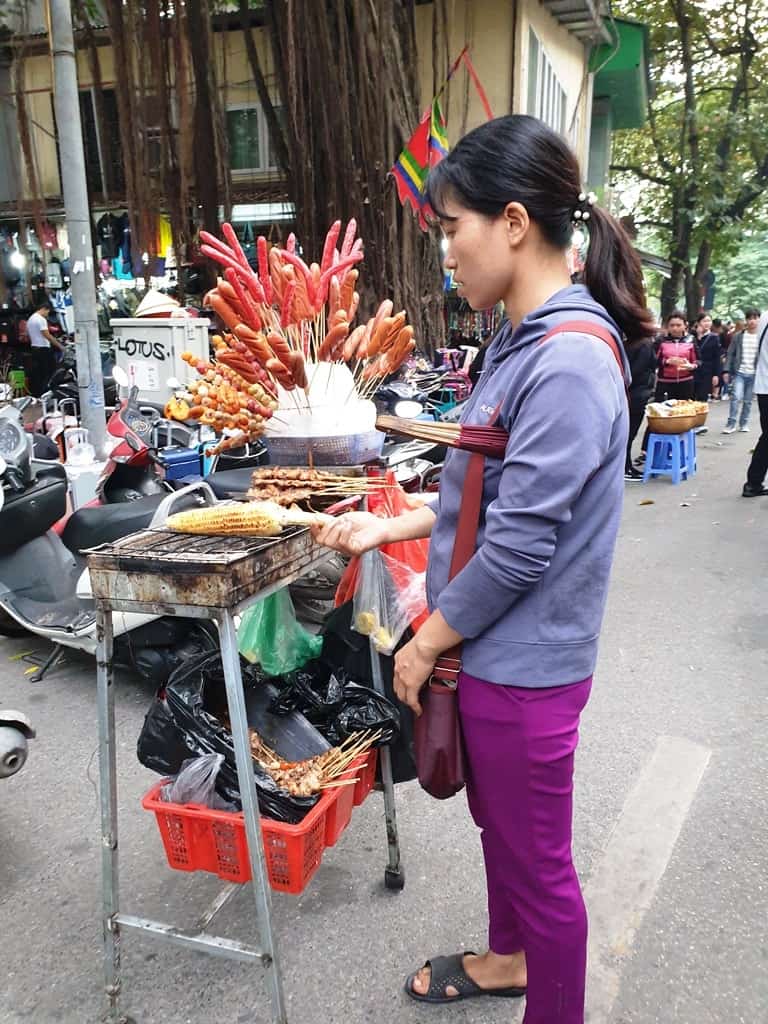
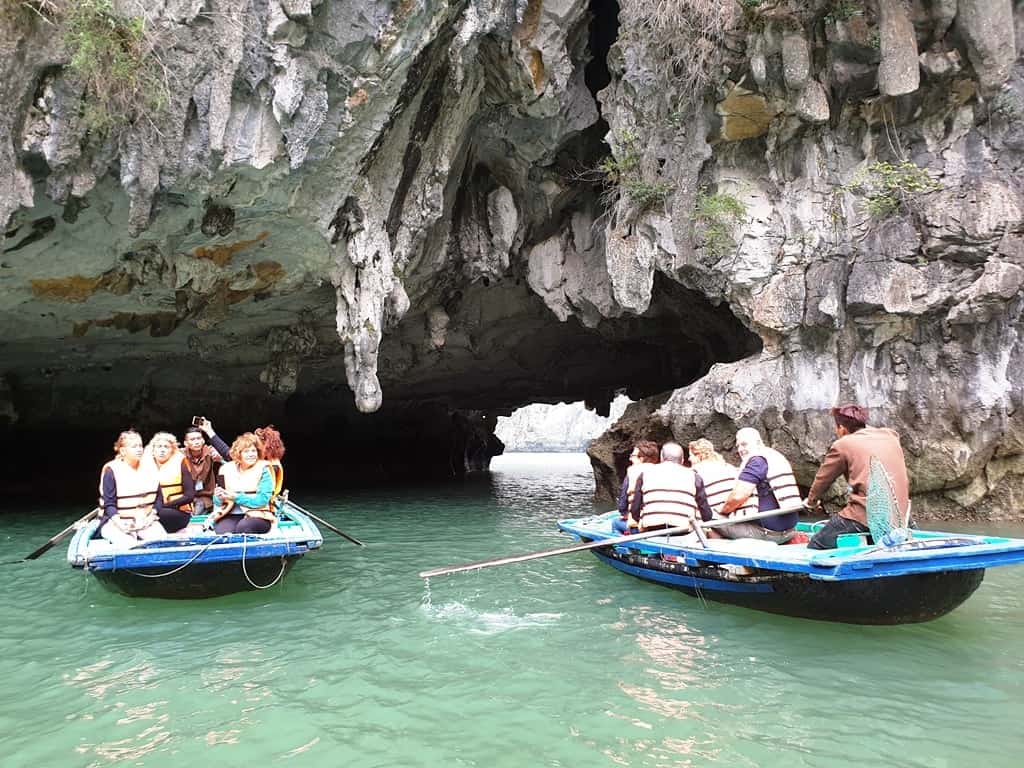

Looks like a really great place to visit, I’d love to see the Train Street!!!